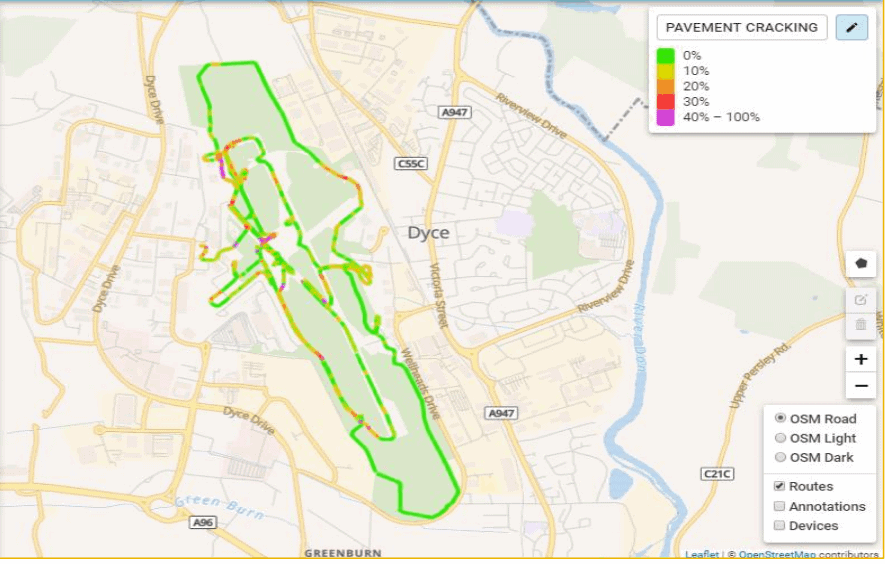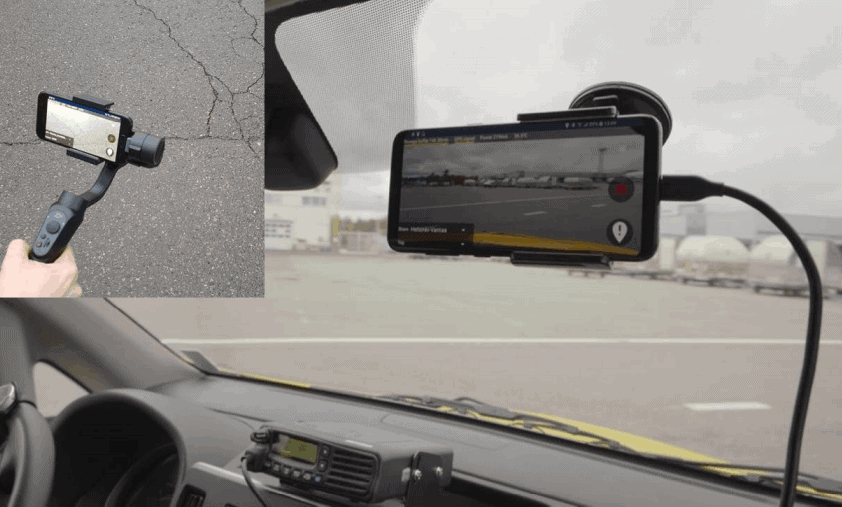Each project and asset is legally independent and has its own managers.
For the development of a transmission line inspection platform using drones and artificial intelligence.
Glasgow Airport recognized with the International Safety Award by the British Safety Council.
Drones for bird hazard control at Southampton Airport
For the first time in Europe we are using a bird-shaped drone named Robird® to reduce bird strikes at Southampton Airport
Bird strikes are a serious threat to airport operations. In fact, in airports with close proximity to water reservoirs such us Heathrow or Southampton, there is at least one bird strike per week during the none migration seasons.
That is why, in 2018, a trial was carried out in collaboration with Clear Flight Solutions (CFS) to address this problem in an innovative and more effective manner. It was the first time in Europe that a drone with bird-like appearance was successfully tested in an airport environment.
Until now, governments, private companies and airport operators have used more or less manual wildlife management techniques to avoid any kind of disruption to airport activity. Whether active or passive, no authority in the continent had previously tested the use of bird-like drones at an airport.
Robird®, this innovative drone, has been thoroughly trialled at Southampton Airport, keeping all types of birds away, as they see the drone as a predator.
These tests, coordinated with the Air Traffic Controller and following the regulations required by the CAA (Civil Aviation Authority), consisted of flying the Robird® during a time slot in which 200 flights operated. The test has achieved these results by flying the drone just an average of 40 minutes a day. This technology has allowed reducing the number of impacts between airplanes and birds by 74%, compared to previous years, thus demonstrating its effectiveness.
The test has not only proved that Robird® could be an effective and efficient method for bird control, but also an improvement for airport operations, with a lower probability of interruptions and delays
Aberdeen Airport
In 2014, in consortium with Macquarie European Infrastructure Fund 4 (MEIF4), we acquired a 50% stake in AGS, the company that owns the Aberdeen, Glasgow and Southampton airports.
Aberdeen International Airport is one of the seven British airports that belonged to the BAA (British Airport Authority) portfolio, which we acquired in June 2006.
During this time, we have carried out several projects that have contributed to the transformation of the airport’s infrastructure, including the extension of its main runway and the renovation and expansion that was completed in 2019.
Aberdeen International Airport has one main passenger terminal and four helicopter terminals. It is one of the world’s busiest heliports helping support the energy sector across the country.
In 2022,Aberdeen became the first airport in Scotland where sustainable aviation fuel became commercially available.
At the National Transport Awards in September 2023, the hard work and dedication of the staff were recognized, an the station was named Transport Hub of the Year.
As the third largest city in Scotland, Aberdeen International Airport is a strategic transport hub in the northeast and an economic drive. The airport contributes more than £110 million a year to the local economy, and is the gateway to Europe’s energy capital supporting more than 3,400 jobs across the region.
The airports of Aberdeen, Glasgow and Southampton receive ‘Very Good’ Certification in CAA’s Disability Access Report.
Aberdeen Airport places its bets on Artificial Intelligence to maintain its runways
At Ferrovial Airports we go a step beyond the standards for airport pavement inspection by performing pilot tests that incorporate an artificial intelligence tool to check the condition of runways and taxiways at Aberdeen Airport.
The condition of the pavement at runways and taxiways is one of the key factors to ensure the safe and efficient performance of airport operations. In addition to having a direct impact on the safety of passengers and workers, any pavement anomaly could generate additional costs and hinder the operation of an airport
Currently, the International Civil Aviation Organization (ICAO) and other Regulatory Bodies establish a minimum pavement inspection process shared by all airports, so it is the responsibility of each operator to increase the frequency and depth of the inspection.
Artificial intelligence to control and prevent possible risks on runways
To control and anticipate possible risks related to runway conditions, Aberdeen Airport has committed to artificial intelligence in a pilot program carried out over the course of 9 months.
To try to control and anticipate the possible risks linked to the conditions of the runway, we have opted for artificial intelligence in a pilot program carried out for 9 months. We opted for the use of a tool that would reduce and operate in maximum safety conditions.
The purpose of VIOMINER, the name given to this initiative, is to strengthen the manual inspection carried out by airport professionals.
This solution was developed in cooperation with Vaisala – a Finnish company that develops, manufactures, and commercializes products and services for environmental and industrial measurements- and with the team at Aberdeen Airport.
Up till then, our technicians specialized in identifying the possible bad condition of the pavement divided their inspections into three levels:
- A first inspection done by technicians in a vehicle twice a day.
- The second one, which is carried out by managers on foot once a month.
- A third phase done by managers and consultants on foot twice a year.
With a mobile app and web-based platform, the new tool with Computer Vision and Artificial Intelligence can identify anomalies such as cracks, abrasion, and potholes, increasing the effectiveness of level 1 and 2 inspections.
During level 1 and through a cell phone integrated into the vehicle, VIOMINER records the runway as it travels. The data collected is loaded into the system and processed. Artificial Intelligence algorithms recognize anomalies in the pavement and create a heatmap of the paths visited.
During level 2 inspections, the manager carries out a more qualitative study of a anomalies by sending a photo and the exact location of the spot by GPS.
All of this information, along with what the professionals have already collect, enables the generation of reports for each anomaly. These are then summed into the data and into a satellite map, which allows register of historical data and creating reports faster and timely manner.
This solution is a clear example of how innovation and new technologies can help improve the operational and economic performance of airports and, above all, demonstrate how anticipating risks can be a competitive advantage in the future.
Boosting digital transformation at Glasgow Airport
Ferrovial Airports has carried out an ambitious digital transformation project to improve passenger experience at Glasgow Airport.
Nowadays, airports are focused on innovating and maintaining a strong focus on enhancing customer experience. In order to achieve this goal, airports are implementing digital transformation initiatives with the help of emerging and existing technologies.
In collaboration with Glasgow Airport, we have carried out a digital transformation project with the aim of improving passengers’ satisfaction and at the same time, maximizing commercial revenue, increase the airport’s positioning as a brand and increase its operational performance.
One of the initiatives carried out within this project include the redesign of Glasgow Airport’s website and the launch of a new mobile app that has been valued very positively by passengers, rating it as 4.6 out of 5. This initiative has increased car parking revenues through our digital channels by 20%.
In addition, operational performance at the airport was improved through the development of an Application Programming Interface (API) which shares fight information from the Airport Operating Database (AODB) to external sources and through the implementation of a tracking proof concept in passengers’ security queues.
Finally, the introduction of a two-phased trial with GLAdys robot resulted in higher brand visibility, as it was the first UK humanoid robot to be put into service at an airport.
In the coming years, new initiatives within this project will be implemented with the aim of bringing new solutions to increase the engagement with passengers and offer them new services that cover the end-to-end journey.
Boosting autonomous mobility at Heathrow Airport
Ferrovial Airports, in collaboration with Heathrow Airport, has tested the latest technology in driverless vehicles.
In the coming decades, mobility operations and surface access at airports will be completely transformed by the growth of electric and autonomous vehicles.
To analyze the impact of these new ways of transportation in the airport sector different driverless vehicle tests were organized in Heathrow.
One of the latest trials was carried out with Navya “Arma”, a 100% driverless and electric car developed by French company Navya, which specializes in the development of innovative and sustainable mobility solutions. It can currently take up to 15 passengers and reach a speed of 45 km/h (28 miles). In is equipped with a powerful 3D navigation system which allows it to easily identify obstacles and road signs and assess traffic conditions.
Heathrow has always been at the forefront of driverless technology as it is one of the few airports in the world that is already using a similar transport system: Personal Rapid Transport system, known as PODs. 21 driverless vehicles that transport passengers between the T5 business car park and the terminal, along a 3.8 km (2.36 miles) railway line. An innovative and sustainable solution that has helped the airport save the equivalent of 213 tons of CO2.
In addition, Heathrow Airport is working to transform 100% of its ground fleet into hybrid and electric vehicles in 2020. For this reason, the airport has invested more than 5 million pounds in the construction of more than 108 recharging points across the airport for electric vehicles operating within its facilities.
Ferrovial Airports awarded in the Air Transport Awards 2017




